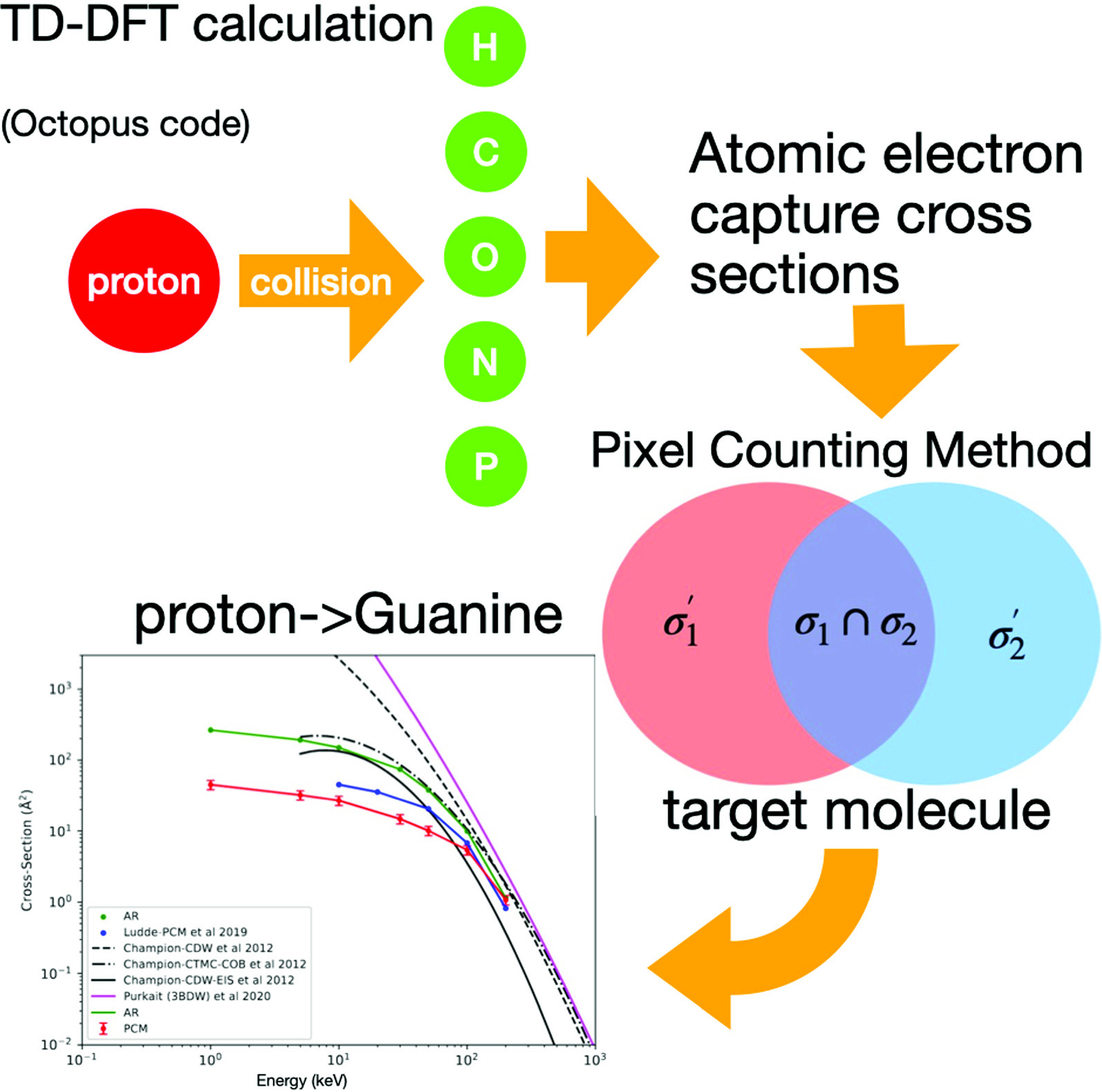https://doi.org/10.1140/epjd/s10053-024-00939-y
Regular Article – Atomic and Molecular Collision
Combination of the TD-DFT and the pixel counting method for determining electron capture cross sections for protons impacting on organic molecules
Instituto de Física “Gleb Wathagin”, Universidade Estadual de Campinas, Sergio Buarque de Holanda 777, 13083-859, Campinas, SP, Brazil
Received:
16
September
2024
Accepted:
22
November
2024
Published online:
5
December
2024
The electron capture by heavy charged particles is of interest in a wide range of physical applications. In radiation biophysics, electron capture cross sections (ECCS) is a key information for the implementation of Monte Carlo simulation codes. In this work, the time-dependent density functional theory (TD-DFT) has been used for the determination of ECCS for protons impacting on atoms with presence in organic compounds, in the 1–200 keV energy range. Later, these atomic cross sections were combined through the pixel counting method for determining corresponding cross section of small and large organic molecules and water, which is of primordial importance in radiation biophysics. The large organic molecules include DNA bases and a whole DNA base pair. Excellent results were obtained for the small molecules along the whole energy range. For DNA components, good results were found at high energies (100–200 keV). At lower energies, larger discrepancies were obtained when compared with other theoretical and experimental work. The possible causes for these discrepancies are deeply discussed. This work should support later works for developing a charge equalization method for classical molecular dynamics to describe fast proton collisions with organic materials.
Copyright comment Springer Nature or its licensor (e.g. a society or other partner) holds exclusive rights to this article under a publishing agreement with the author(s) or other rightsholder(s); author self-archiving of the accepted manuscript version of this article is solely governed by the terms of such publishing agreement and applicable law.
© The Author(s), under exclusive licence to EDP Sciences, SIF and Springer-Verlag GmbH Germany, part of Springer Nature 2024
Springer Nature or its licensor (e.g. a society or other partner) holds exclusive rights to this article under a publishing agreement with the author(s) or other rightsholder(s); author self-archiving of the accepted manuscript version of this article is solely governed by the terms of such publishing agreement and applicable law.





